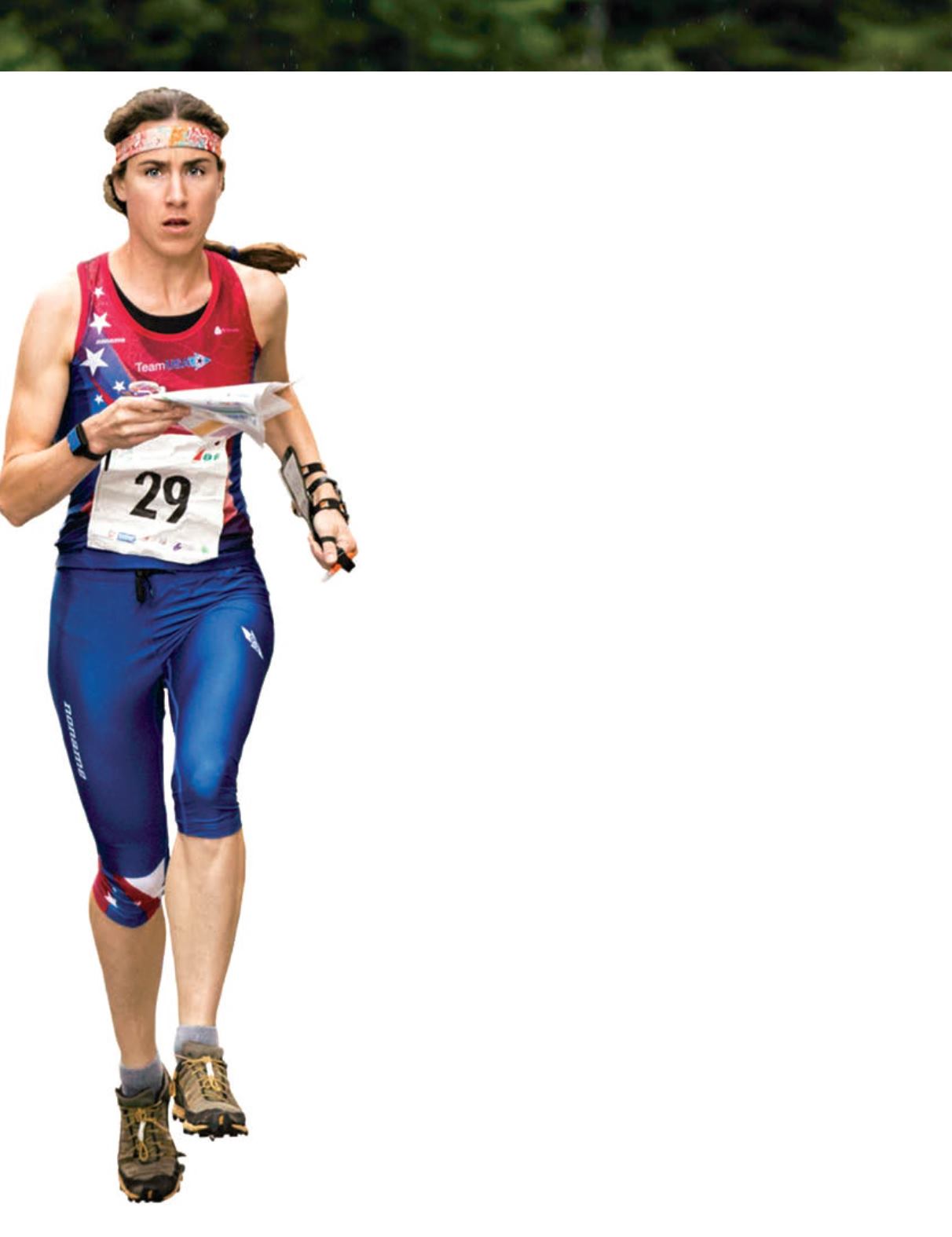
16
“That lasted for about six weeks,” she
laughs.
Within a few months of her arrival in
Oxford, Crocker was competing with the
university’s varsity cross country team.
The running crowd steered Crocker back
toward orienteering, and she rekindled
her love for the sport after participating
in an event through the heaths of Brill
Common. By the time she left Oxford
with her doctorate, Crocker had become
a “serious orienteer,” eventually winning
the individual British university title
(equivalent to an NCAA championship).
On her return to
the U.S., Crocker
completed a
post-doctorate
fellowship at the
University of
Massachusetts,
Amherst, where
SPS alumnus Peter
Gagarin ’63 became
her orienteering
coach and mentor.
Gagarin himself is
a highly successful
orienteer, whom
Crocker credits
for pushing her
to look beyond the
achievements she began to find in the U.S.
and toward international competition.
“It is not easy,” says Gagarin, a five-time
American champion and one-time World
Masters champion, “and yet the best in
the world do it at high speed, navigating
almost flawlessly. They are really impres-
sive athletes, both physically and mentally.
Ali is the best orienteer this country has
ever had. She is very talented physically;
very smart; and she understands what
is involved in being successful at the
international level.”
Gagarin helped Crocker become what
she calls an “armchair orienteer” –
learning the benefits of studying maps
of courses anywhere in the world –
from any location – so she would be
that much better prepared when she
arrived for competition.
“If you can read a map, you can get
around anywhere in the world,” she
says, recalling an experience with a map
whose words were entirely in Japanese.
“That’s one of the things I love most about
orienteering. The woods are the woods.
It’s very powerful to be able to go some-
where and get around.”
A niche sport in the U.S., orienteering
is much more popular in Europe, espe-
cially Scandinavia, according to Gagarin.
Crocker, he says, is at a slight disadvan-
tage to her international counterparts
because the opportunities to compete
domestically are limited relative to their
varied choices.
For the neophyte, orienteering is not
about pacing 100 yards to the west and
finding a clue. It involves sophisticated
navigational skills,
while moving as
swiftly as possible
on foot, through
wooded terrain,
using a map and
compass to locate
a series of flagged
checkpoints. Markers
may be 100 meters
apart in a sprint race
(approx. 20 minutes),
up to 3km apart in a
long-distance event
(approx. 90 minutes),
and somewhere in
between in a middle-
distance race (approx.
40 minutes). Navigation requires com-
petitors to use decision-making skills as
well, such as whether to go through or
around swampy land or over or around a
particularly rugged, undulating patch of
terrain. Competitors start one by one,
minutes apart, and see the official course
map for the first time at the moment they
are on the clock.
“The biggest challenge is that you can
never do it perfectly because there are so
many choices to make; left or right at this
tree, for example,” says Crocker. “There
is no such thing as a perfect orienteering
race. It can be hard to recover if you run
off the map – these are not manicured
woods, so you have to use problem-
solving skills to make choices. While
running really fast. But what is difficult
also makes it fun.”
Crocker’s results have reflected her
combination of preparation, athletic ability,
and intellectual pursuit. She won her first
U.S. Orienteering Championship in 2011,
sweeping the sprint, middle-distance,
“
“
If you can
read a map,
you can
get around
anywhere in
the world.


